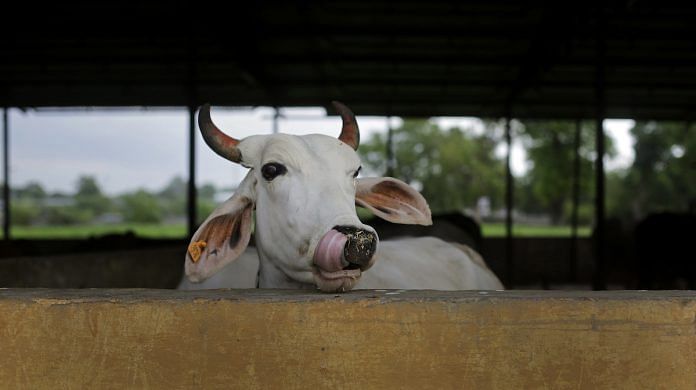New Delhi: India is facing an extreme animal feed shortage, which is a “major factor” behind the recent rise in costs of milk production, a study released by a government institute has said.
In a report titled ‘Revisiting National Forage Demand and Availability Scenario’, released late last year, the Indian Grassland and Fodder Research Institute has pointed to a deficit of up to 29 per cent in the availability of feed, including fodder.
According to the report, there is a deficit of 23.4 per cent in the availability of dry fodder, 11.24 per cent in that of green fodder, and 28.9 per cent for concentrates.
This means that for every 100 kg required, India is short of 23.4 kg of dry fodder, 11.24 kg of green fodder, and 28.9 kg of concentrates.
Among other things, the report points out that the shortage in fodder availability is a “major reason” why Indian livestock’s milk productivity is 20-60 per cent lower than the global average. Feed alone constitutes 60-70 per cent of milk-production costs.
Also Read: Cattle numbers down by 6% since 2012, sharpest fall in states with tough cow slaughter laws
Source of cash income
Fodder is the food meant for domesticated livestock, such as cows, buffaloes, goats, sheep, chickens, and others. It has three types — dry, green and concentrates.
Dry fodder, which caters to more than 50 per cent of the demand for livestock feed in India, comprises crop residue, for example, the straw left behind after wheat and rice are harvested.
Examples of green fodder include forage crops (those grown specifically for grazing), grasses from forests and pastures, and cultivable wastelands.
Concentrates are feed mixtures of protein, carbohydrates, and fat that include oilseed cakes and crushed pulses. It’s rich in energy-yielding nutrients, unlike crop residue.
Emphasising the importance of healthy fodder availability, the report notes that livestock is often the only source of cash income for around 12.6 crore small and marginal farmers as they serve as insurance in the event of crop failure.
‘Dwarf variety of crops, straw-burning to blame’
Guru Prasad Singh, a dairy expert at the Institute of Agricultural Sciences, Banaras Hindu University, attributed the low production of fodder in India to straw-burning and promotion of a dwarf variety of wheat.
“The harvesting of paddy by combine harvesters leads to low dry fodder production but straw-burning destroys the possibility of extracting any crop residue for fodder,” he said.
A.K. Roy, principal scientist at Indian Grassland and Fodder Research Institute and project manager for the report, also pointed to the role played by dwarf varieties of crops.
“The new high-yielding dwarf varieties of sorghum, wheat and maize have high grain content but no straw, which has lead to a decline in dry fodder production,” he said.
Shortfall by state
State-wise, Delhi (100 per cent), Maharashtra (98 per cent) and Gujarat (63 per cent) were found to have the highest shortfall of dry fodder.
As for green fodder, the shortage was steepest in Jharkhand (67 per cent) among the top 10 states with the highest livestock population. It is followed by Uttarakhand (55 per cent) and Odisha (44.8 per cent).
“Reduction in forest and pasture land is the reason behind reduction in green fodder, which could have otherwise stemmed malnutrition caused by lack of concentrates, which are expensive and cost Rs 20/kg,” said Roy.
Also Read: Modi govt backs cow dung-based farming. Now its own officials call it a ‘myth’



